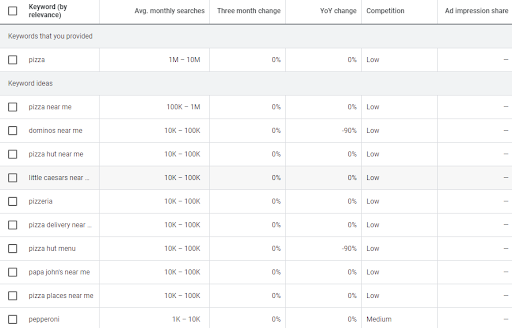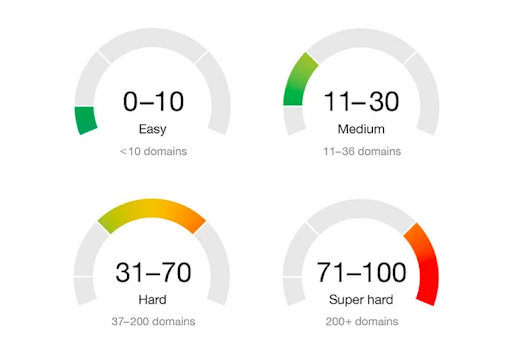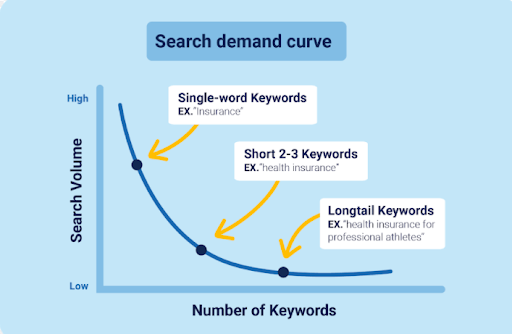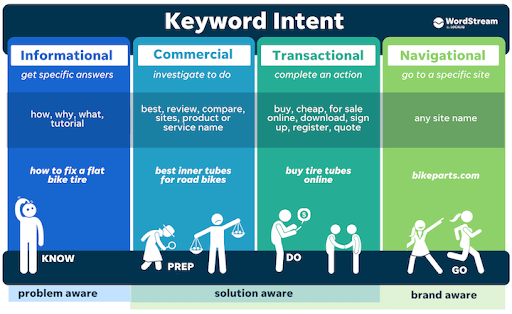Any SEO expert worth their salt will tell you that high-volume, high-converting, low-competition keywords are the Holy Grail of an SEO strategy. But much like the Holy Grail, finding these keywords can seem like searching for a needle in a haystack.
Even though these keywords are the heavy hitters of SEO, in today’s oversaturated market, you might find more success going down the road less traveled. That’s where low search volume keywords come into play.
Not many people are searching for low-volume keywords, so they’re often viewed as the little guys of SEO. However, in this article, we’ll look at how these keywords can be a fitting alternative to high-volume keywords. Let’s get started.
What are low search volume keywords?
Generally speaking, online marketing tools favor keywords with a high search volume. But while their broader keywords increase the chance of a bigger audience, it does mean they’re highly competitive. That means you need to create more and more content to top the rankings.
Alternatively, low-volume keywords (those below 250 searches per month) present an ideal opportunity to target terms that are 100 percent relevant to your business.
That doesn’t mean you should focus on targeting keywords that are not relevant—that would be a waste of time for both you and your audience. Instead, it’s better to engage with relevant and niche keywords that reflect your business and audience.
So while you won’t receive thousands of new users per month, those users will be closer to a point-of-purchase. In addition, more specific low-volume keywords will accelerate your organic traffic.
How to target low search volume keywords
Keyword research ensures there is a demand for your product and content. If you want to improve your crawl stats and thus rank well on Google, you need an open-door policy with your online visitors. And that all comes down to having the right keyword mapping strategy.
Follow these steps below to discover low search volume keywords:
- Brainstorm “seed” keywords: Before combing through keywords, consider the topics your target audience will be searching for, in particular seed keywords that define your business.Seed keywords are what you put into your keyword research tools. For example, if you have a pizza truck, you might consider seed keywords such as dough, pizza, pizza oven, and pizza truck
- SEO keyword research: Use your brainstorming topics to get started. Implement your seed keywords in a keyword research tool and gather your results. Results will generally reveal the most popular keywords relating to your search, including keyword difficulty (KD) and monthly search volume. This is the ideal opportunity to see what keywords your competitors rank for.

Source: Google Ads
- Remove popular keywords: Once you have your results, you’ll be presented with a table listing keyword search volume and difficulty scores. The first results will display high-volume keywords so you’ll need to ignore these results to continue. Filter the overly competitive and irrelevant keywords leaving you with keywords scoring between 0-10 KD. It’s that easy.
- Study your niche: Once you have amassed your low search volume keywords, pay attention to the keywords that relate to your business.
8 reasons to target low search volume keywords
While targeting low-volume keywords is considered a niche strategy, it’s a strategy that works. And with the chance to increase your CTR by 32.3 percent for every position you climb, working your way up the ranks of Google SERPs should be a priority.
Let’s look at why you should target low search volume keywords.
1. Low search difficulty
Search difficulty is a metric used to determine how difficult it is to rank for a keyword. The higher the search difficulty, the more challenging the keyword is to rank. Targeting low-value keywords means it’s easy to rank quickly, as backlinks and higher authority aren’t necessary.

Source: Wordstream.com
For example, the broad search term “bicycle” brings in 231k searches per month with a keyword difficulty level of 89. This means it’s incredibly hard to rank.
In contrast, the more concise “best bicycle for outdoor exercise” has a keyword difficulty of ten with only 200 searches per month.
So even though there’s a much lower search volume, spreading these keywords throughout your content will bring more traffic and boost your ranking.
[Case Study] Optimize links to improve pages with the greatest ROI
2. Less competition
As there isn’t much interest in low-volume keywords, it makes sense that an SEO service might be hesitant in targeting them. But if you think outside the box, less interest means less competition, so you’ll have a clear advantage using low-volume terms.
Using specific low-volume keywords lets you stand out. As audiences using these terms are closer to point-of-purchase, you can utilize keywords that even your competitors haven’t considered.
3. Long-tail keywords lead to high conversion rates
Long-tail keywords (longer and more specific keyword phrases) receive less traffic but generally boast a high conversion rate. These phrases are made from three to five words and are more detailed than generic terms, allowing you to target niche demographics.
Even though these long-tail keywords have low search volume, utilizing a high-volume keyword in the middle will boost your audience. This is what’s referred to as piggybacking. Using the bicycle example again, “best bicycle” has a search volume of 2.3k per month, whereas “what is the best bicycle for seniors” has only 80 searches.

Source: Similarweb.com
This tells us “best bicycle” is a high-volume keyword, so including the in-demand phrase as part of the long-tail keyword lets you capitalize on its popularity. This means you have a higher chance of converting and return on investment.
4. Build interest
Currently, 15 percent of all Google searches have never been searched before. Low-volume keywords can open the doors to this untapped traffic, especially if you have a small or niche company.
Most of the time, some keywords have low search volumes because users have yet to use these specific terms. People don’t think to search for what you’re selling. To get around this, target popular keywords that relate to your product.
An example would be a facial ice roller. Instead of targeting the product, keywords such as “how to combat puffiness” and “reduce redness” piggyback on their reach. This is the perfect chance to jump on competitive SEO analysis.
Additionally, targeting low-volume keywords specific to your industry builds brand awareness. Once you’ve amassed enough content, your keywords will start ranking and you’ll become an authority in your niche.
5. Great return on investment (ROI)
While fewer people are searching for low-volume keywords, their ROI is much stronger. Typically, even the lowest volume keywords drive conversions that offset your content costs. Because users have more actionable search intent, there’s more chance of them converting.

Source: WordStream.com
Commercial buying keywords such as “best” and “top” target users that are ready to make a purchase. What’s more, the majority of the time, these keywords are lower in volume because they’re specific. This allows you to use them to your advantage and increase your ROI.
6. Increase diversity
On their own, low-volume keywords won’t attract enough traffic to make a significant impact. Thankfully it’s easy to include multiple low-volume keywords in a single piece of content. The sheer volume will increase your chance of ranking.
Instead of focusing on a specific keyword, focus on hundreds of low-volume keywords relevant to your content. Even if you fail at ranking some of your keywords, you’re casting a wider net with the same intent.
Incorporating several versions of your keyword will generate more traffic than using the keyword on its own. Even if specific keywords are different, you can tailor your copy to match these terms.
7. Analytics
When you perform competitor analysis it allows you to position yourself as a worthy alternative to your competitors. Analytics find the cracks in their strategy and recommend keywords and variations that will help.
Competitor analysis provides an understanding of what works and what doesn’t. This awards you the platform to use a wide array of low-volume keywords while creating more impactful content. Better content naturally attracts backlinks and increases shareability.
8. Relevancy
Your content has more chance of relating to your audience with specific low-volume keywords. And the more relevant your content, the more likely users will convert. The term “books” is too broad of a search, whereas “adventure books for 10th graders” is much more niche.
Not only will this help find prospective users, but Google prioritizes relevance in its ranking system. So longer keywords and content chock-full of relevant keywords will have a better chance of ranking.
Wrap up
Whether you’re just starting or want to keep your site relevant, investing in low search volume keywords is a step in the right direction. As we can see, the benefits of using low-volume keywords help target consumers ready to convert.
As the digital landscape continues to grow, we need to find new ways to reach an audience. So rather than dismissing keywords with only 20 people searching for them, tailor your low-volume keywords to fit their needs.

